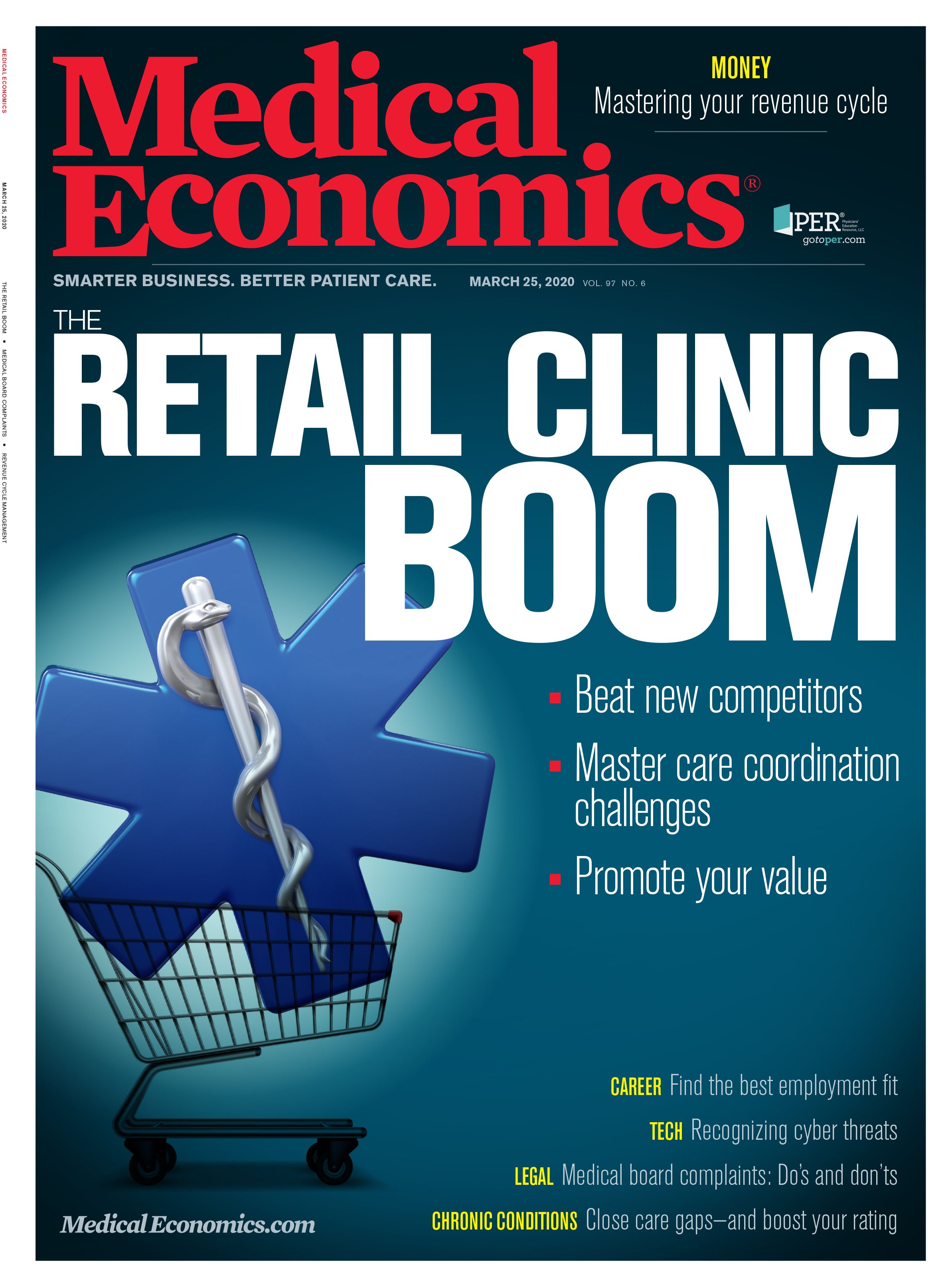Publication
Article
Medical Economics Journal
Improving quality and increasing star ratings
Author(s):
What you need to know to perform better on quality measures and get a higher rating.

Medicare and Medicaid make up 38 percent of medical payments in the United States. Whether working in a private practice or a health network, a large number of patients will be receiving benefits from these programs run through the Centers for Medicare and Medicaid Services (CMS).
By accepting payments through federal payers and contracted Medicare Advantage (MA) plans, physicians are held to the quality standards set by CMS and the National Center for Quality Assurance (NHQA). These standards were established in 1991 and are updated yearly to reflect changes in value-based care goals and standard of care guidelines. With an increasing focus on value-based care, physicians can expect a larger focus on these quality measures.
The Healthcare Effectiveness Data Information Set (HEDIS) is divided into six domains of care:
- Effectiveness of Care,
- Access/Availability of Care,
- Experience of Care,
- Utilization and Relative Resource Use,
- Health Plan Descriptive Information, and
- Measures Collected Using Electronic Clinical Data Systems.
HEDIS defines how these quality measures are to be collected by payers for evaluation of both providers and insurance plans. Collection methods can include billing claims, surveys or clinical documentation from offices or labs. Once collected, measures are tallied into a 5-Star rating for private payers using pre-determined Core Quality Measures stratified for different medical specialties.
As these ratings are tied to CMS reimbursement bonuses, there are incentives at multiple levels to reach either the 4- or 5-star rating tiers. Many insurance companies have their own programs designed to help providers meet these measures through education, tools and bonuses. Pay-for-performance programs include flat-fee bonuses for each patient meeting a measure or a percentage bonus for a practice if it meets a certain rating threshold.
Working with payers to meet these goals helps increase effectiveness of care and can be an important source of revenue for healthcare providers.
Preventive screenings
CMS has selected several HEDIS measures as indicators of care of the elderly population. Working on these measures, including prevention screenings, diabetic management and medication adherence is an important step to improving a practice’s quality ratings.
HEDIS measures related to preventative screenings were designed with United States Preventative Services Taskforce guidelines in mind. For MA patients, these are colon cancer and breast cancer screening. The quality measure is a percentage determined by the number of patients with completed tests over a denominator of total applicable patients.
Thus, it is important to identify all patients who should be recommended testing and to help remove barriers to testing. The National Colorectal Cancer Roundtable offers several tips for practices that are applicable to any screening measure. Physicians should evaluate their resources to determine which screening methods are best suited for their patients based on demographics or location.
While Annual Medicare Wellness visits are an excellent opportunity to discuss and order preventative interventions, often it is necessary to order screenings during regular visits. Therefore, physicians should develop action plans such as screening policies so that staff members can provide order recommendations. Electronic health records can also help by providing automatic notifications for testing.
Once patients are identified, the final step is ensuring they are tested. This includes patient education on the importance of screenings, help with test scheduling, and providing reminders for appointments or test-kit submissions via mailings or text messages.
HEDIS measures are automatically captured using billed CPT codes for completed screenings. However, proper documentation of prior testing can help simplify the process of identifying patients who need future screening.
Supplemental data may be submitted to close care gaps for patients who do not require testing in the current year, such as someone who isn’t due for a colonoscopy for three years. This can be accomplished by submitting the medical record to insurance providers. Exclusions such as previous mastectomy patients who don’t need biannual mammograms can also be submitted in this manner.
The importance of diabetes
The single medical condition that takes the most weight in the CMS 5-Star ratings system is diabetes. These measures fall into a category called Comprehensive Diabetes Care and include HbA1c >9.0%, annual retinal eye exam, blood pressure control <140/90 mmHg and annual nephropathy screening.
Percentage of patients with HbA1c>9.0% is one of several triple-weighted measures CMS uses for ratings calculation and physicians will want to ensure that this data is being accurately reported to payers. The HbA1C measure is captured using CPT-II codes, and when charting for completed HbA1c tests, physicians should use the following codes to denote these results:
3044F signifies <7% whereas 3045F denotes a result between 7-9% and 3046F denotes >9%. It is important to follow up with patients with poor control throughout the year because only the last test result of the calendar year is captured. Additionally, appropriate preventative interventions should be performed each year to prevent chronic complications.
Blood pressure should be assessed at every visit and annual retinal exams ordered unless results were normal in the previous year. Nephropathy screening should be performed by urinalysis or micro-albumin screen because a spot dipstick test is insufficient.
Because insurance companies are held to the same standards as physicians, they will often have resources that providers can recommend to patients for self-management, such as house calls, telehealth case management, education resources or financial incentives for annual testing.
Chronic care coordination, diet education, or lifestyle counseling are also resources that physicians can recommend to these patients to help with diabetes management.
Medication adherence
Medication adherence is another important category in the HEDIS quality measures. Two measures for Medicare patients are statin therapy for ASCVD (SPC) and diabetic (SUPD) patients. To meet requirements, patients will need to be on at least one approved medication for 80% of the year. Continuous medication adherence is tracked by billing claims from pharmacies and is calculated on the assumption that patients take their medications every day and pick up refills as soon as they run out.
Each day that an unfilled prescription is left at the pharmacy is counted against the measure. Physicians can try to simplify prescriptions for patients by giving three-month refills They can also avoid directions to pill-split, advise patients to show their insurance card at the pharmacy and educate patients on medication adherence. For elderly patients this could mean acquiring a pill organizer or finding assistance such as a mail-order pharmacy with shrink wrap services.
A representative from UnitedHealthcare Regional Operations says a common misconception is that documenting non-adherence can help close care gaps such as refusal to take medication or perform screening tests. Only a few specific exclusions, such as intolerance to the listed drugs or end-stage renal disease are usually accepted.
Exclusions such as these need to be accurately documented and coded. Physicians also should discuss the reason for refusal with patients or consider other appropriate medication options. Patient education on the importance of the intervention and a proper system for reminders can help improve adherence.
To get a better understanding of the quality measures payers track, physicians can refer to resources published by major Medicare Advantage providers showing the HEDIS measure collection method exclusions and tips on improvement. These guides can educate office staff on proper documentation and billing coding protocol. Examples of these guides include the UnitedHealthcare PATH guide or the BCBS Provider Quality Pocket Guide that include quick summaries of important measures both for MA patients and privately insured patients.7. These guides are also useful for keeping track of the annual changes made to HEDIS reporting that will impact practice.
Working to improve quality measures requires a team approach. Regularly scheduled care meetings with staff and insurance providers are useful tools to gauge performance in various quality metrics for the clinic. Quality Improvement projects can either be based on HEDIS measures or internal benchmarks, and they should be developed with clear goals in mind. Other potential areas for improvement could be assessed by looking for barriers of care in your care population or soliciting feedback from patients. These can be used to determine future QI projects.
Quality Assurance measures are here to stay, and with the current shift to value-based care and how private payers are modeled on Medicare, it can be expected that increased weight will be placed on these measures going forward. Changes are to be expected and it can be hard for providers to keep up to date on what measures they’re responsible for as well as how they are being tracked. CMS is holding multiple parties responsible for the best coordinated healthcare management of Medicare patients so physicians do not have to bear this burden alone.
Insurance payers with MA programs often put out references and tools for private physicians to quickly digest and make appropriate changes in their practices. Physicians can reach out to the largest MA payers in their network to enroll in incentive programs geared towards improving on quality measures and learn about the resources being offered their patients outside of the clinic. Focusing on developing office protocols towards meeting these measures can be an important part of increasing revenue for the office and improving appropriate care for your patients.
Jesse Zheng is a third-year medical student at the Medical College of Georgia in Augusta, Ga., and Janis Coffin, DO, is the chief transformation officer at Augusta University Health in Augusta, Ga.
References:
Mikulic, Matej. “Distribution of U.S. health care expenditure from 2014 to 2018, by payer.” Statistica, August 2019. https://www.statista.com/statistics/237043/us-health-care-spending-distribution/.
“About CMS.” Centers for Medicare and Medicaid, n.d. Web. https://www.cms.gov/About-CMS/About-CMS.html.
“HEDIS Measures and Technical Resources.” National Committee for Quality Assurance, n.d. Web. https://www.ncqa.org/hedis/measures/.
“NCQA’s Health Insurance Plan Ratings 2019-2020.” National Committee for Quality Assurance, n.d. Web. https://www.ncqa.org/hedis/reports-and-research/ratings-2019/.
Sarfaty, Mona. “How to Increase Colorectal Cancer Screening Rates in Practice: A Primary Care Clinician’s Evidence-Based Toolbox and Guide 2008.” Eds. Karen Peterson and Richard Wender. Atlanta: The American Cancer Society, the National Colorectal Cancer Roundtable, and Thomas Jefferson University 2006, Revised 2008.
“Health Insurance Exchange : 2019 Quality Rating System Measure Technical Specifications.” Centers of Medicaid and Medicare, August 2018.
“2019 Blue Cross NC Provider Quality Pocket Guide”, Blue Cross and Blue Shield North Carolina, October 2018.
“PREV-13: Statin Therapy for the Prevention and Treatment of Cardiovascular Disease.” Centers for Medicare and Medicaid, November 2017.





